MusicRadar Verdict
The Brass shelled snare has an irresistible warmth, steel has more low clout, and there is plenty to separate the two. However, while they are in their element slamming out huge backbeats, they are less appropriate for unplugged restraint, making them less suitable for gentler players. Despite this, they are extremely impressive heavyweight (in all senses of the word) snares.
Pros
- +
Superb build quality and heavy duty construction, stadium-busting performance.
Cons
- -
There’s not a great deal to tempt subtler players.
MusicRadar's got your back
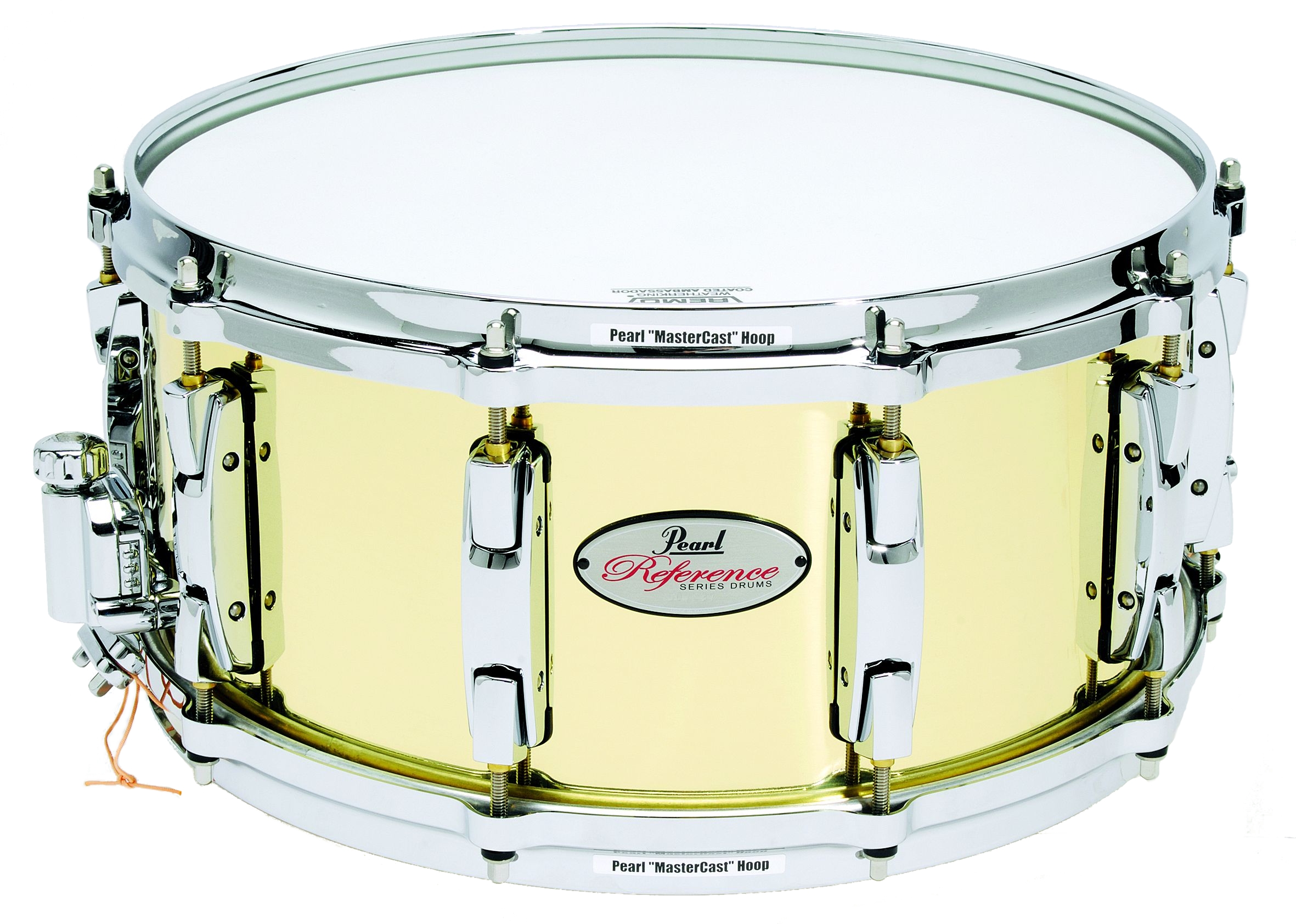
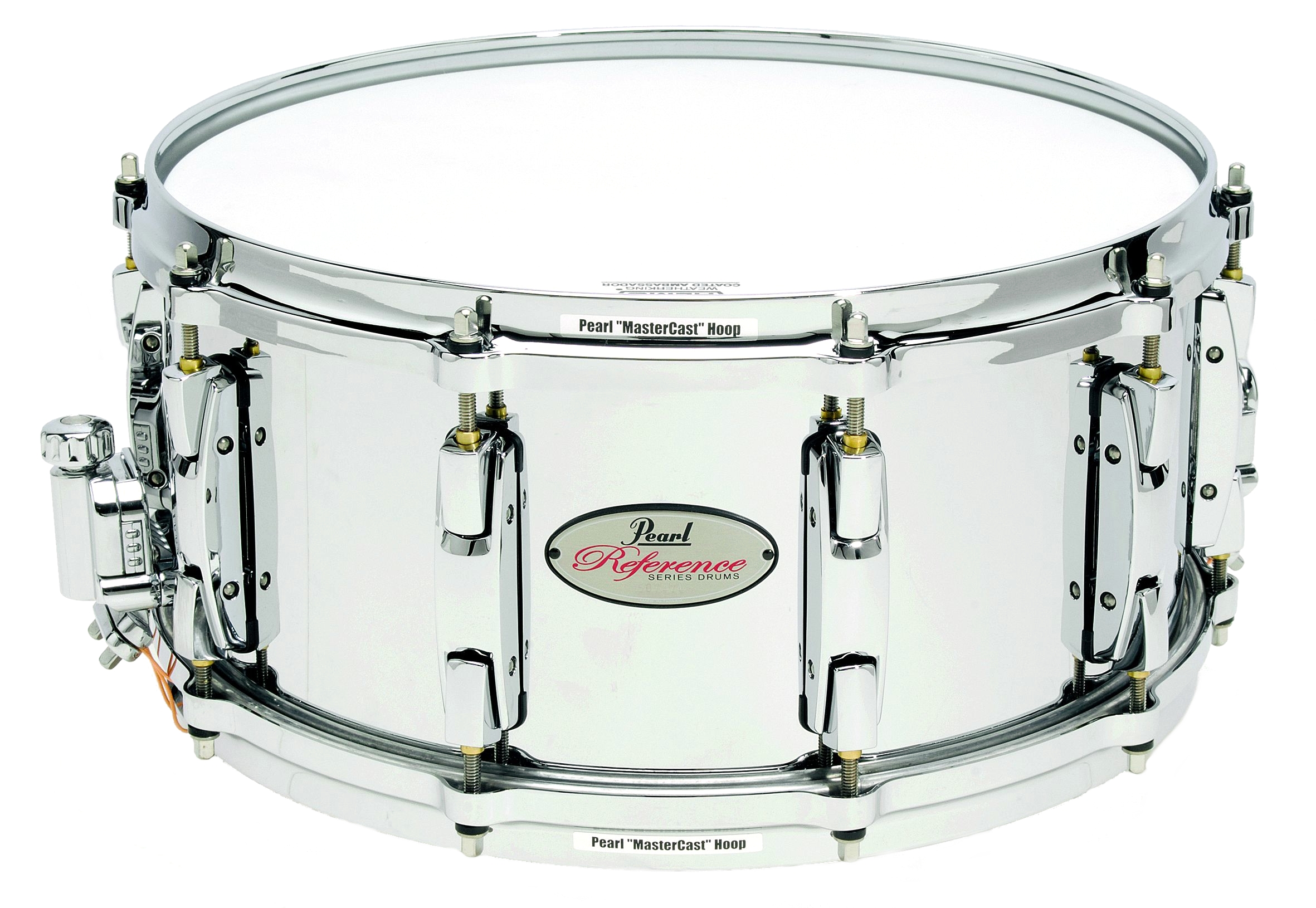
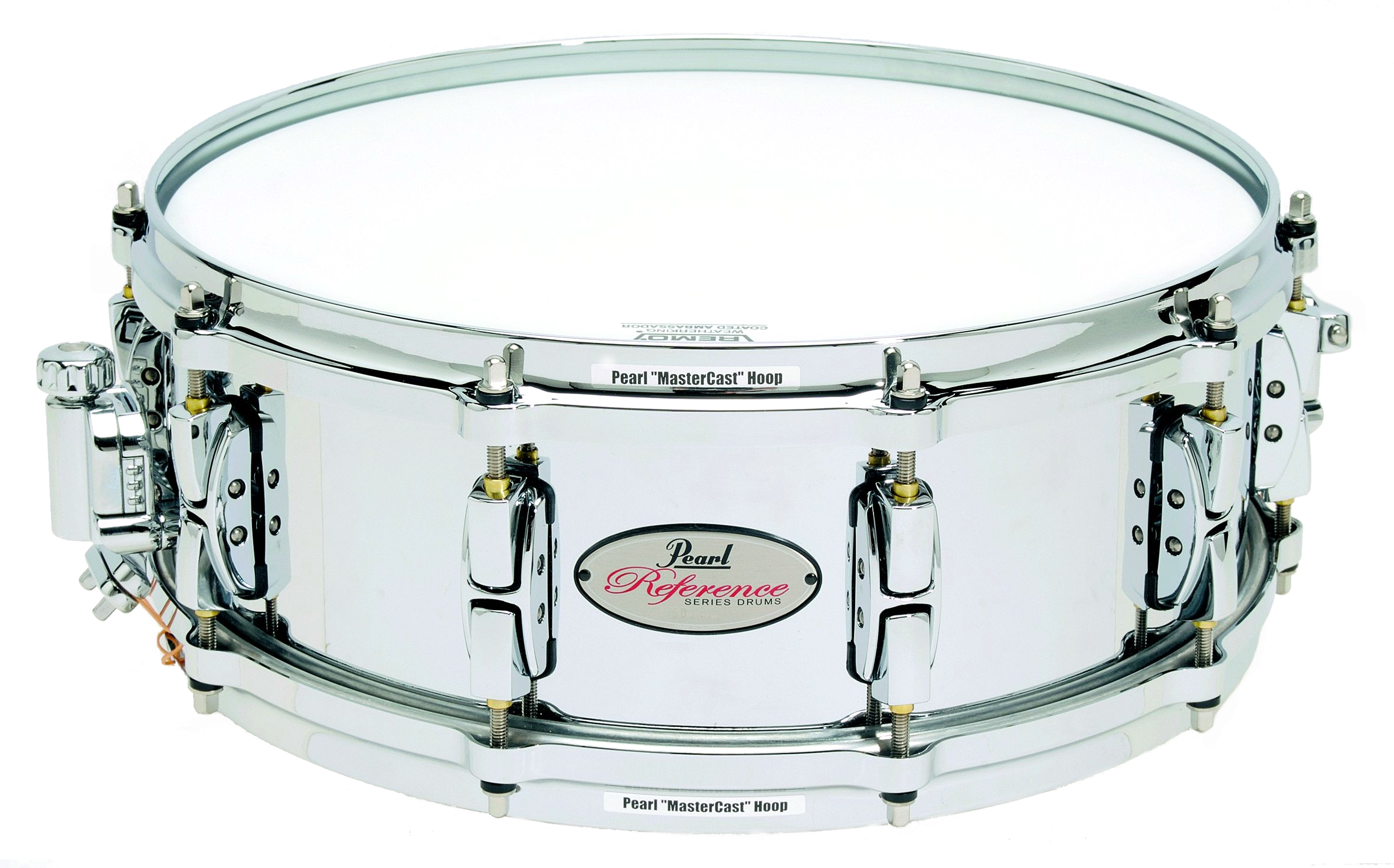
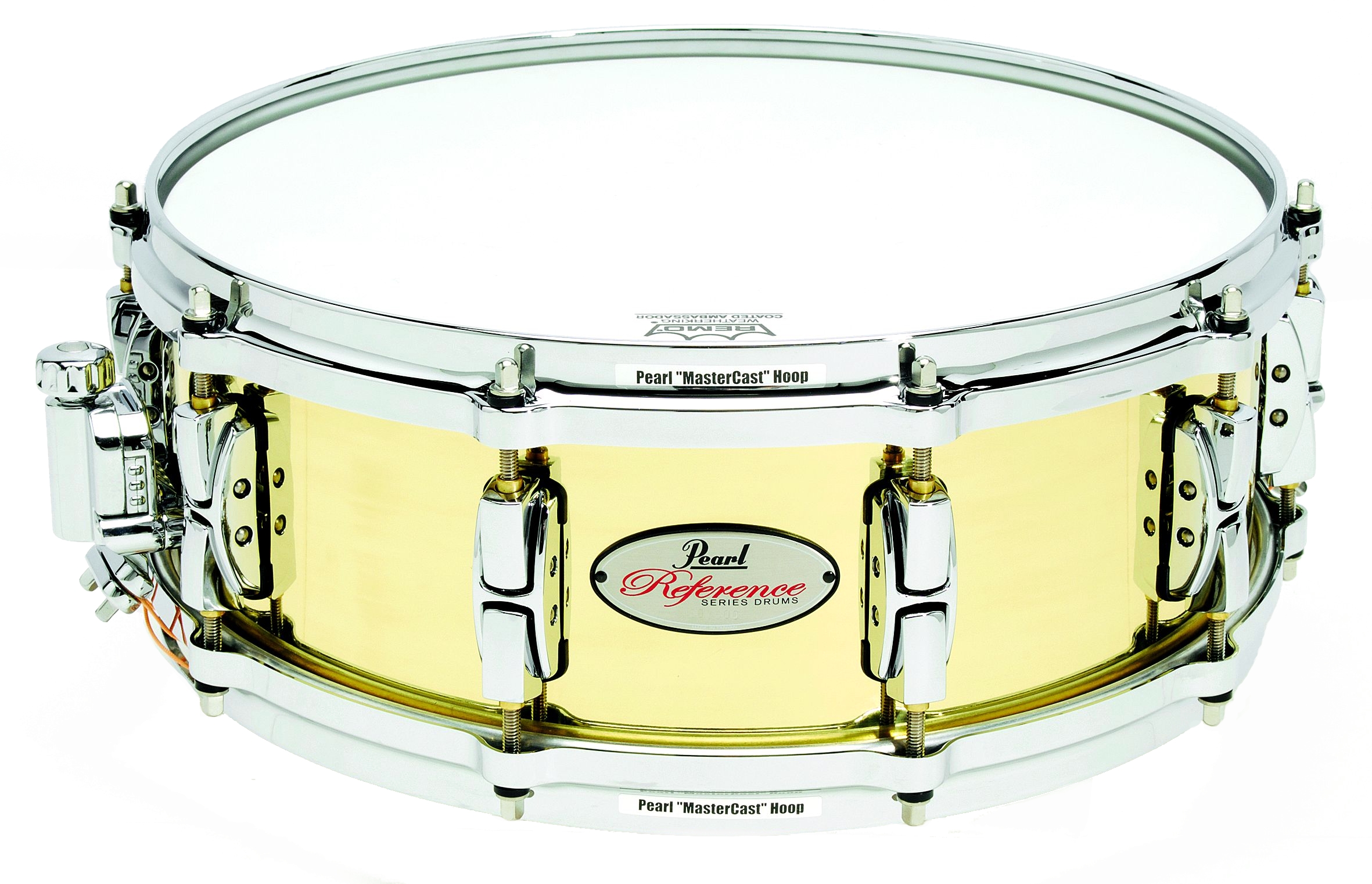
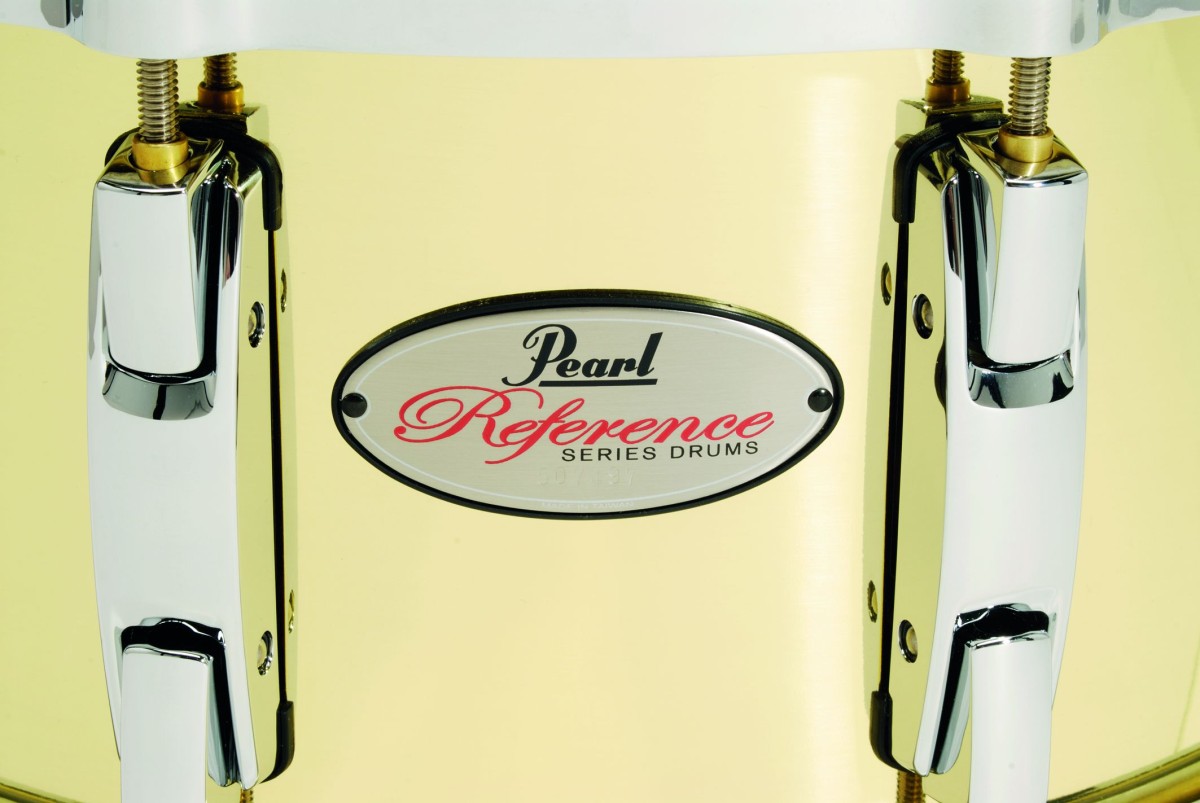
Pearl's Reference Series landed in 2005 to all-round acclaim. Drawing on experience gained in making its coveted Masters range, Pearl came up with fairly radical but logical construction concepts. Mixing woods with different bearing edges according to each drum's size and function, the Reference Series represented a complete approach to kit building, with minimum compromises across individual components.
Until now, only wooden snare drums have been available in the Reference Series. These four new snares are the first metal drums to be given the Reference treatment.
Weighing in
The four drums are made up of a pair of steel and a pair of brass-shelled models.
Each shell metal comes in two sizes; 14"x5" and 14"x6½". The original Reference drums were notable not only for their hybrid materials and construction techniques, but also their high level of engineering. So it is with these new drums, which have been built to withstand the sort of drumming that would register on the Richter scale.
Firstly, there is the thickness of the shells - the steel models are cast at 2.5mm thick and the brass numbers come in at an incredible 3mm. The sheer density of the shells, combined with hardware that errs on the side of heavy-duty, adds up to seriously heavy drums.
That said, they're also bejewelled with fabulous details. Pearl's unique pivoting lugs, which align perfectly with each tension rod, are as aesthetically pleasing as they are technically marvellous. Beneath the pivoting arms, the body of each lug is bridge-style (for minimal shell contact), which can only be for the better.
The snare tensioning and throw-off mechanisms are also impressive. The throw-off lever locks in place and can only be released by holding down a small button on top of it, making it near-impossible to accidentally dislodge. Similarly, the tension adjustment nut must first be pushed down onto its spindle before being turned, so the snare wires won't loosen off mid-performance.
Cleverer still is the fact that both mechanisms can be easily detached from the shell without interfering with the tensioning adjustment, so the bottom head can be changed and the snare wires re-hung at exactly the same tension as before. In common with the whole of the Reference Series range (bass drums excepted), meaty die-cast hoops are fitted on all of the drums, along with Remo heads top and bottom.
Steel appeal
The steel-shelled drums are polished to an immaculate mirror shine. The shells are cast with reinforcement rings at the top and the bottom, which add another 2.5mm to the thickness internally. Thinner-shelled metal snares are often bent over at the ends to form a lip, which is then shaped into the bearing edge.
With shells this thick this is not an option, so the bearing edges are machined directly from the shell.
The amount of metal on these drums doesn't just influence their weight; it affects how they sound too. These are loud drums that are not only happiest when being walloped, but require a bit of positive input to get the best out of them. The 14"x5" model opens with a tight, funky snap.
Beneath the higher frequencies lies a typically gritty steel core. Hit dead centre, the sound is very controlled, while edging away draws in metallic overtones. The 14"x6½" snare is thicker sounding and noticeably louder. It retains a tightness to it though - the extra proportions add muscle rather than flab. Take the tuning down to the upper-mid/lower-high band and the drum really takes off, with a commanding performance.
Rim shotting the die-cast hoops adds more volume and an even harder edge. Perhaps unsurprisingly, neither of the steel snares fared particularly well with brushes. There is plenty of surface rustle from the batter head, but brushes don't have the necessary wherewithal to energise the shell and get the snare wires moving in a truly sympathetic way.
Brass soul
Unlike the steel snares, the brass-shelled drums are formed by rolling and welding sheets of brass (though finding the join proved to be a forlorn task). There are no reinforcement rings and the bearing edges are again cut directly into the shell.
The exterior of the shells is dazzlingly bright but, beneath the shine, very fine brush marks are just visible. The 14"x5" drum is full of warm brass tones, making it crisp and sweet. As is often the case with brass snares, it begs to be tuned high, but still punches well at lower tensions.
The 14"x6½" model takes the qualities of its smaller sibling and magnifies them. The deeper drum is still blindingly precise and sharp, but sounds fatter and louder. Again, the zone between mid and upper tunings is where it really kicks in, whipping out beats with a keenness that borders on sadistic.
The brass snares were slightly more successful where brushes were concerned; the innate enthusiasm of brass bringing a little more response from the wires.
These snares have been built to an incredibly high standard and could take just about anything that even the wildest of drummers could throw at them.
MusicRadar is the number 1 website for music makers of all kinds, be they guitarists, drummers, keyboard players, djs or producers...
GEAR: We help musicians find the best gear with top-ranking gear round-ups and high- quality, authoritative reviews by a wide team of highly experienced experts.
TIPS: We also provide tuition, from bite-sized tips to advanced work-outs and guidance from recognised musicians and stars.
STARS: We talk to musicians and stars about their creative processes, and the nuts and bolts of their gear and technique. We give fans an insight into the actual craft of music making that no other music website can.
“A synthesizer that is both easy to use and fun to play whilst maintaining a decent degree of programming depth and flexibility”: PWM Mantis review
“I feel like that song had everything we needed to come back with”: Bring Me The Horizon’s Lee Malia on Shadow Moses, its riff and the secrets behind its tone, and why it was the right anthem at the right time
“I said, ‘Are we sure we can write a song about death?’”: The story of Mike + The Mechanics' classic No.1 The Living Years










